“I guess you’ll want to know all about the history of this place then?” We were sitting in the Riverside Cafe in La Grange tucking into our normal breakfast – omelette for Terry and eggs easy over, hash browns and sausage for me, when the owner came over. Having read about the town’s Czech Heritage in a booklet at the Cottonwood Inn, we were expecting a story of immigration, pioneers and success against the odds. “Yes that would be great!” we said. We are both suckers for local history.
“Remember the Chicken Ranch?” Our host said proudly “You know, The Best Little Whorehouse in Texas – they made a movie about it?”
“Ah yes,” we replied, wondering what it had to do with La Grange. “Well it was here in La Grange,” she went on to explain, while topping up the coffee. “On the road out of town – of course it’s all gone now, torn down years ago – but come with me – there’s a mural in the room next door.”
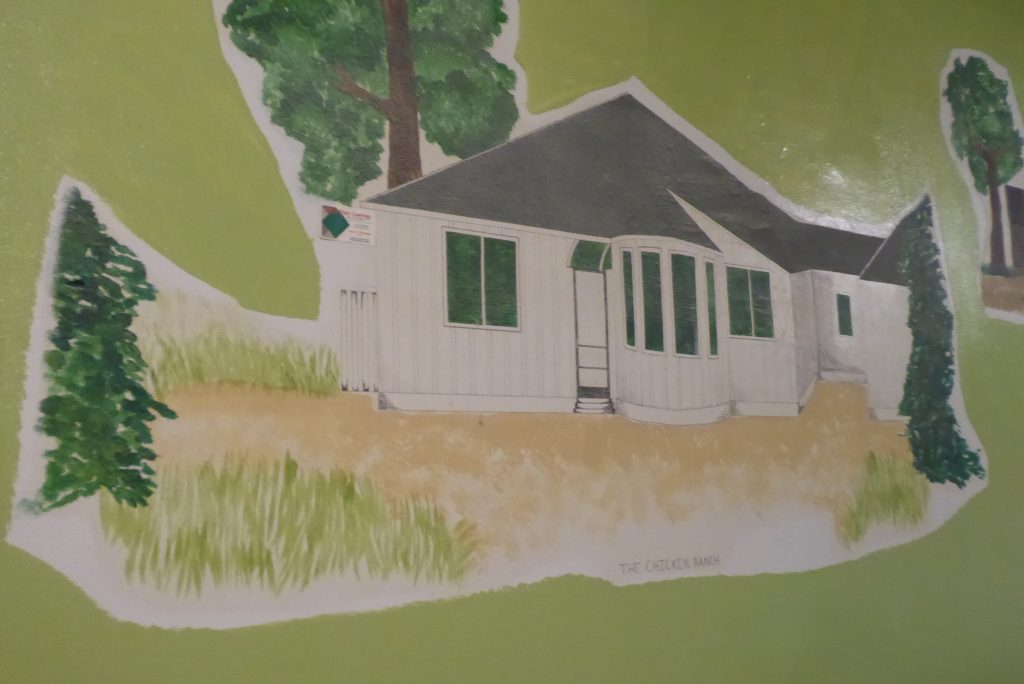
We expected to see a fresco featuring Dolly Parton and the rest of the cast, but instead there was a painting of a rather innocuous single storey building with the words ‘Chicken Ranch’ written underneath. It looked more like a suburban retirement bungalow than a house of ill-repute. And with that our waitress was gone, history lesson over.
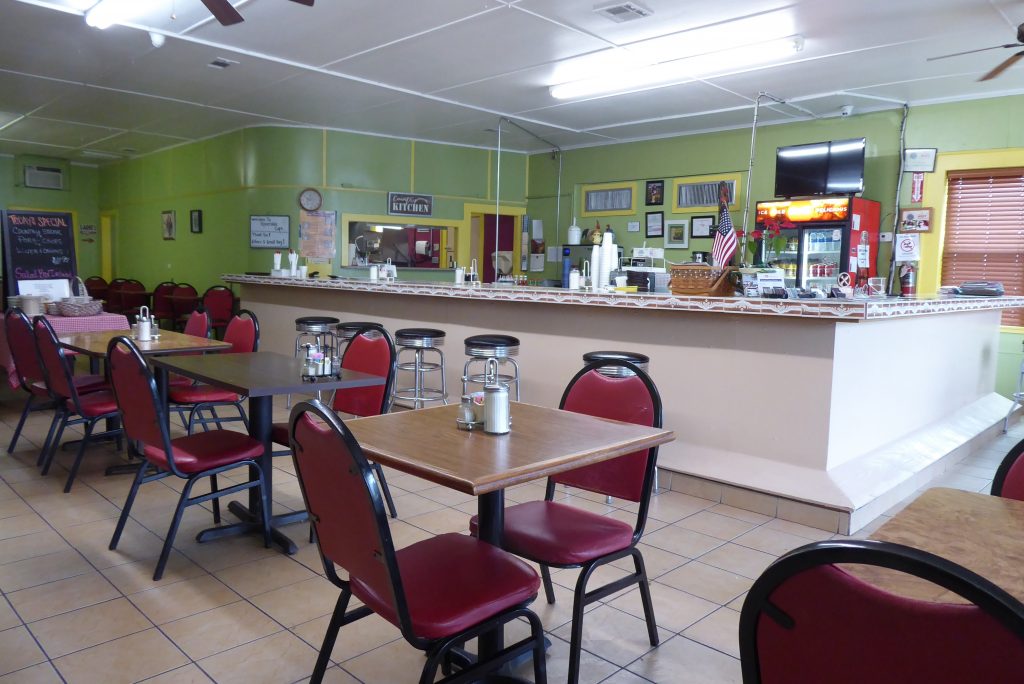
More interesting was the town’s history of immigration which saw an influx of Germans in the late 1840s closely followed by the Czechs. There’s still evidence of those communites in town today and La Grange is twinned with towns in German and the Czech Republic. We took it upon ourselves to experience at least something Czech so cycled back over the Colerado River into town and stopped off at Luka’s Bakery, which had been open since 5am.
“That’s the great thing about riding a bike you can eat virtually what you like. Well Terry can and I hate to see him dine alone”.
Not that we arrived anywhere near that time. Knowing we only had 40 miles to cover today we’d enjoyed a lie in until 8am and made a late start. As we’d left the Cottonwood the staff had asked us to leave a review on tripadviser. It was at least clean and free of cockroaches, so was a step up from many we’d stayed in, but it was still rather low rent, the wifi didn’t work and was pretty expensive at $80 dollars. We skipped on the review.

Luka’s was far more attractive and we stocked up on bread, two cinnamon swirls and eight date squares which we decided to start eating straight away. That’s the great thing about riding a bike, you can eat virtually what you like. Well Terry can and I hate to see him dine alone.
Before leaving town we did a quick whistle stop tour. The Texas Heroes Museum is housed in a Gothic-style building which was once the Old Fayette County Jail and it does exactly what it says on the tin, honouring and recounting the stories of Texan heroes.
Unfortunately it only opens for a couple of days each week, but we were able to glean that La Grange was where Bill Anders, the Apollo astronaut who had taken the first ever photo of the Earth rising during the Apollo 8 mission, had gone to school. There were also stories of the fight for Texan Independence and of local people who had served in Vietnam. There was nothing about a whorehouse.

We headed out of town alongside the 77 with steady traffic. Six miles and a few climbs later and we turned left down the 153 towards Winchester. We were delighted to find this was countryside similar to that we had missed (in the rain) the day before. The road was windy and hilly, with rolling landscapes of fields and woodland, the grass was a lush green and the trees were well into bud.
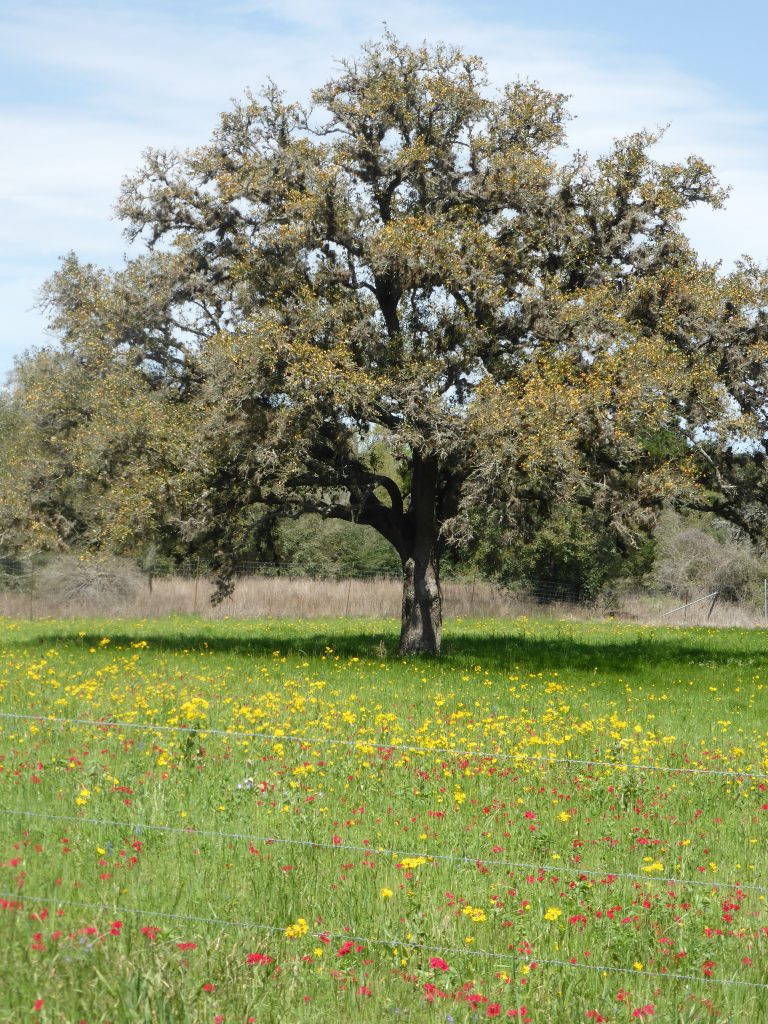
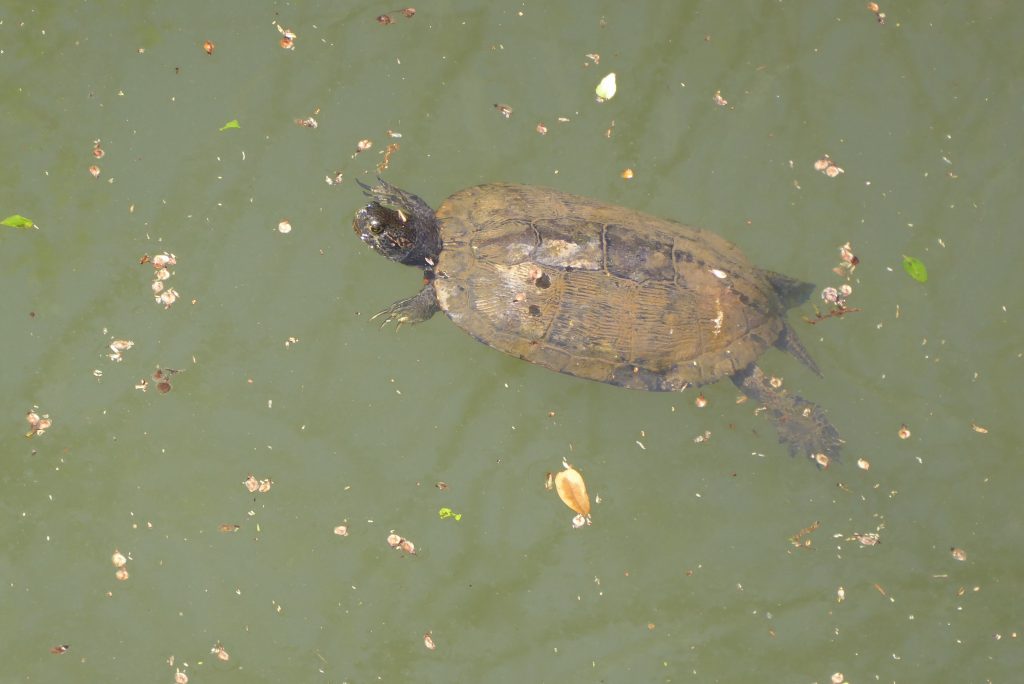
Birds of prey flew overhead, turtles plopped from their resting places into the streams when they saw us pass and orange, yellow and black butterflies skipped from flower to flower. And the flowers! The fields were a sea of bluebonnets and countless other varities displaying oceans of oranges, reds and purples. It was simply stunning and was a multi-coloured confirmation that spring in Texas had finally sprung.
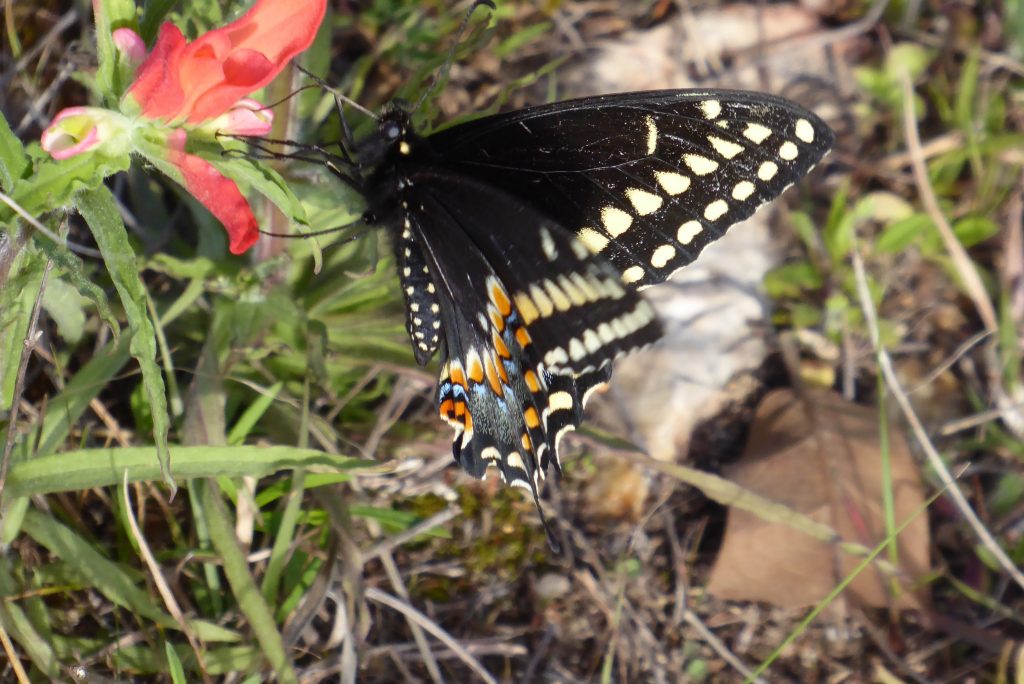

It would have been perfect cycling, had it not been for the constant headwind which was to stay with us for thirty miles. In the hills nestled mostly small homes and farms seperated by the occasional large ranch. For some reason if there was a herd of cattle there was usually a donkey in with them as well. It wasn’t until we did a bit of googling that we discovered that they are there to protect the herd.
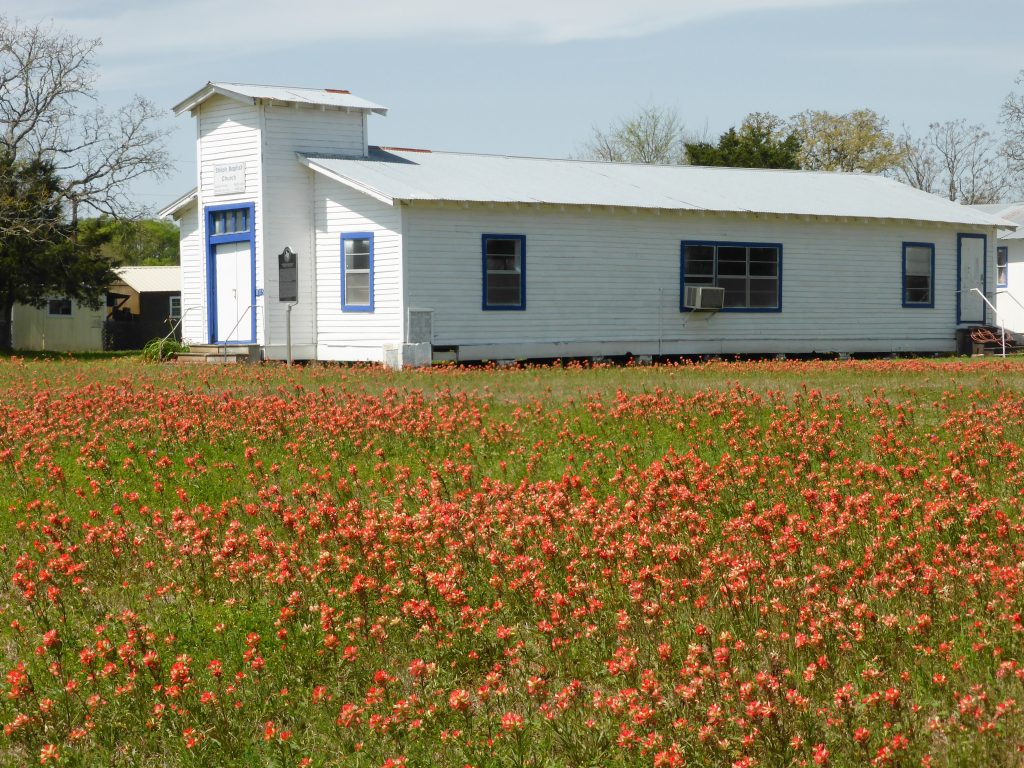
Apparently once a donkey has bonded with a herd of cattle it will protect them against predators such as foxes, dogs and coyotes. Having once been kicked in the backside by a bucking donkey my advice would be to leave those cows well alone.
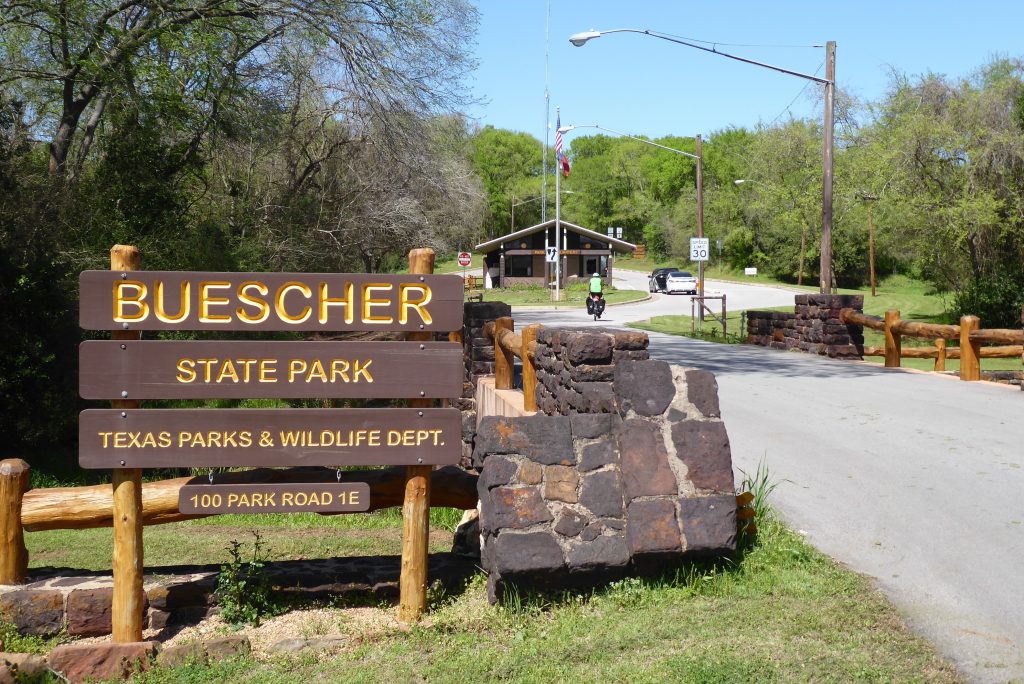
Buescher State Park opened in 1940 and covers more than a thousand acres. A scenic park road connects it with Bastrop State Park and passes through the Lost Pines, a remnant of rare loblolly pine trees unique to this area and which scientists think was once an extensive pine-oak forest covering much of Central Texas during the Ice Age.
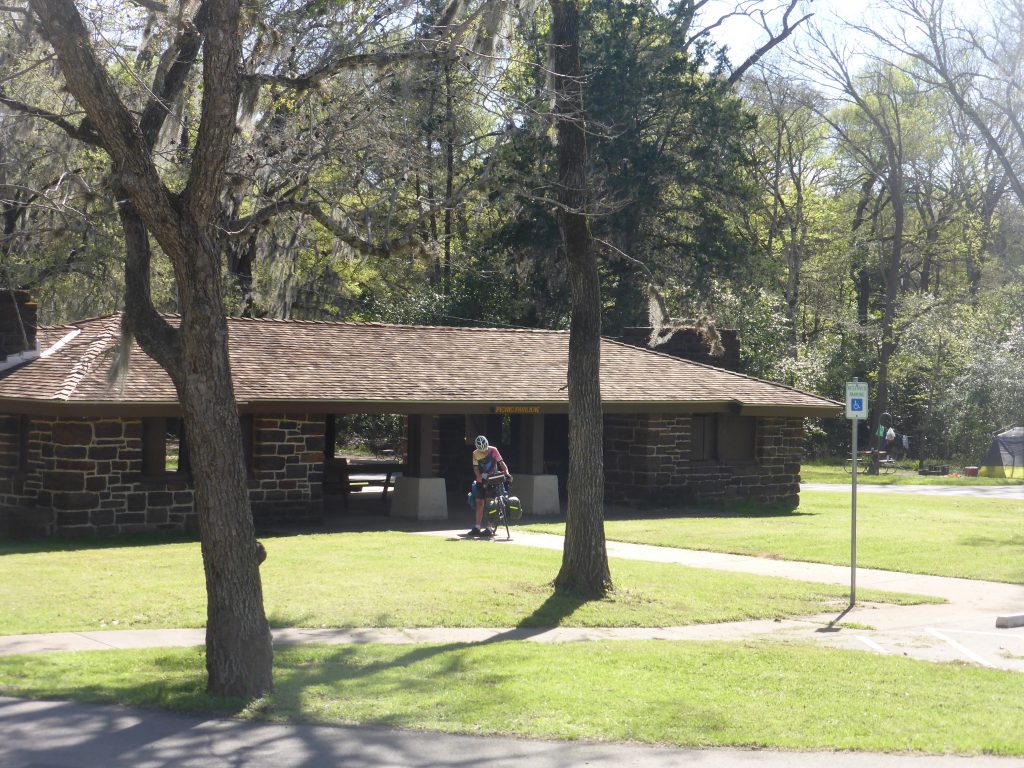
It cost us $3 each to enter Buescher, but with the accompanying leaflet offering a potential sighting of a Greater Roadrunner we paid up. Enjoying the peace and tranquility we sat down in a lakeside shelter for our gastro lunch of peanut butter sarnies washed down with tepid water. Seconds later two park officials fired up a couple of huge lawn mowers and commenced whizzing circles around us and cutting the grass with great gusto. “It’s lovely here isn’t it?” I shouted to Terry. “Ten past three,” he replied. The minute we stopped eating, the mowers stopped, but the moment had passed and we had to push on.
“The sign said ‘Steep Grades. Strenuous,’ and it described the eleven mile section into Bastrop, perfectly”.
“The section between Buescher State Park and Bastrop State Park is quite challenging, but you both look quite fit,” the ranger had explained when we first entered the park. She wasn’t wrong. The sign said ‘Steep Grades. Strenuous,’ and it described the eleven mile section into Bastrop, perfectly, although I think we’d have added the words ‘challenging and bloody knackering.’
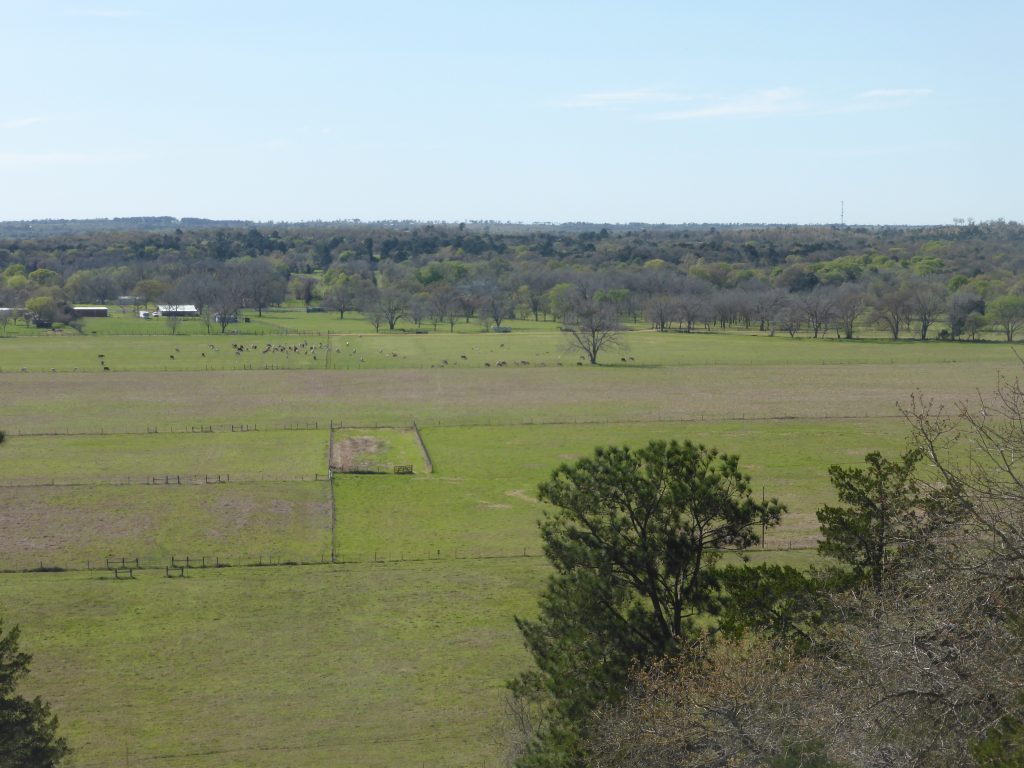
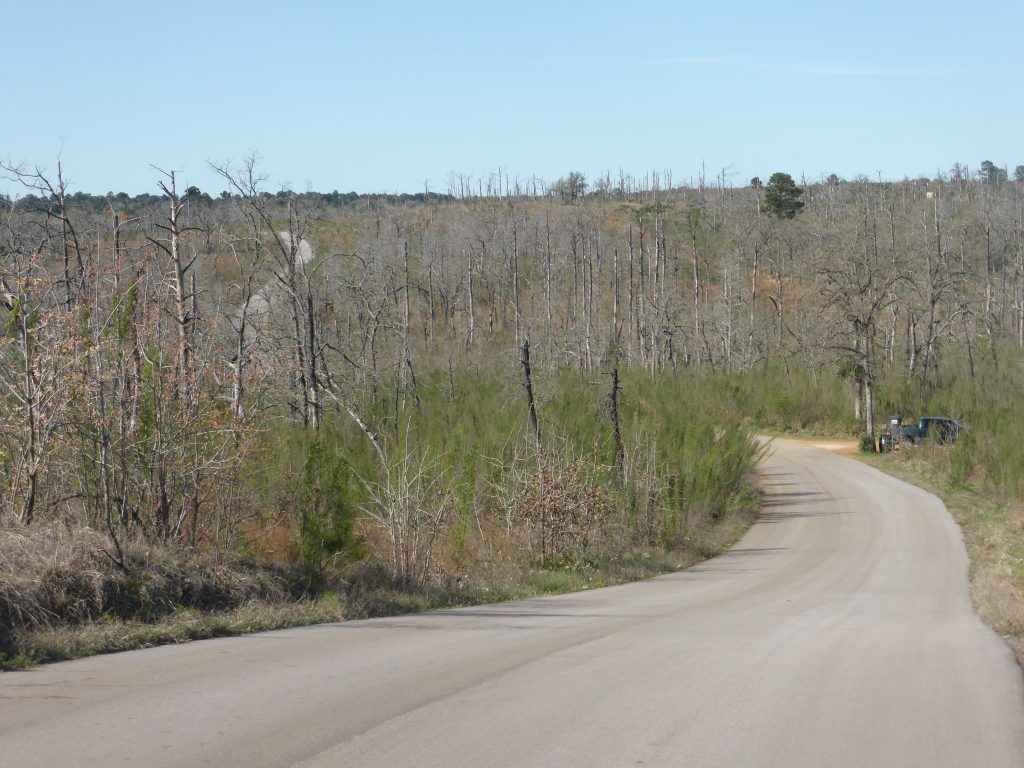
Compared to what we’d done so far on the Southern Tier this was a one hell of a shock. Not only were these proper hills but after the first few miles of climbing we also started to see stark evidence of the major fires which have ripped through this area in recent years.
“It was all a bit depressing and there was no sign of the Greater Roadrunner either”.
The Bastrop County Complex fire is said to have been the most destructive wildfire in Texas history, killing four people, destroying 1,673 homes and causing severe damage to Bastrop State Park. Then in 2015 the Hidden Pines fire raged for 11 days over more than 4,500 acres and destroyed 64 homes as well as much of Buescher State Park. There are signs of regrowth but it will take decades to be a mature forest again.
It was all a bit depressing and there was no sign of the Greater Roadrunner either. He had obviously decided hanging around with Wile E. Coyote was far safer than watching his tail feathers go up in smoke.
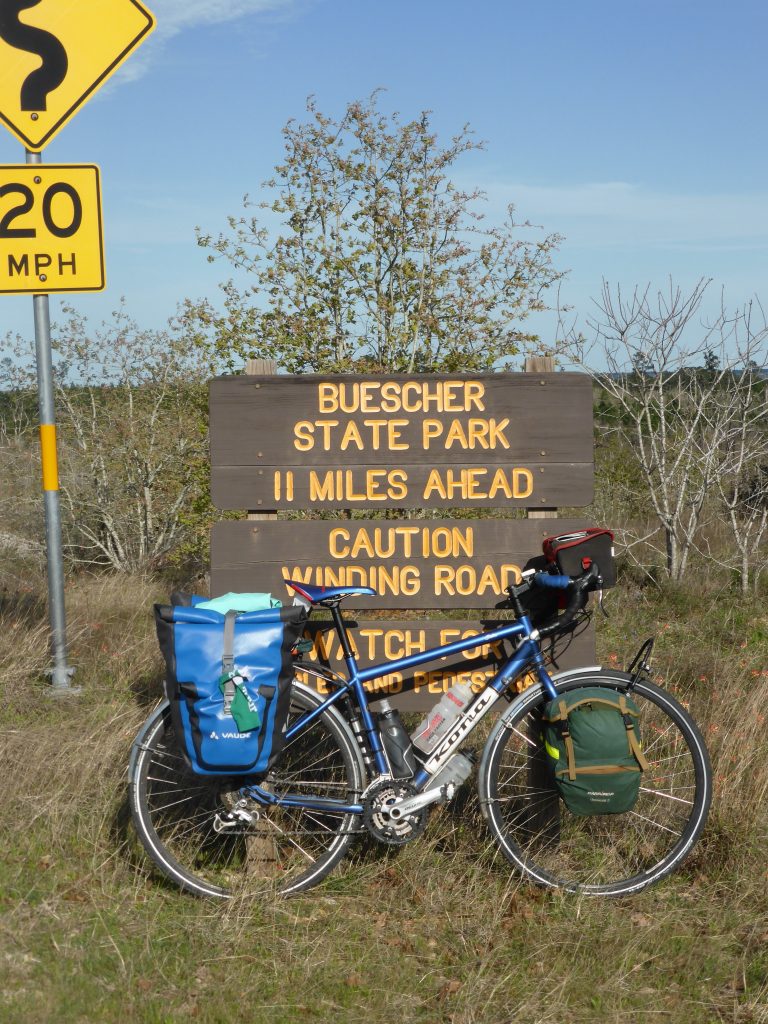
Terry climbed much faster than I did and when I finally caught up with him his first words were: “These climbs barely feature on the ACA maps!” He was already worrying about the steep climbs we faced once we left Austin and whether or not we have time to do them on our tight schedule. I’m convinced we can do it, but I also know that if we are slow it will be down to me and not Terry. Since I’m determined not to cut any more mileage from the route I’d better up my game.
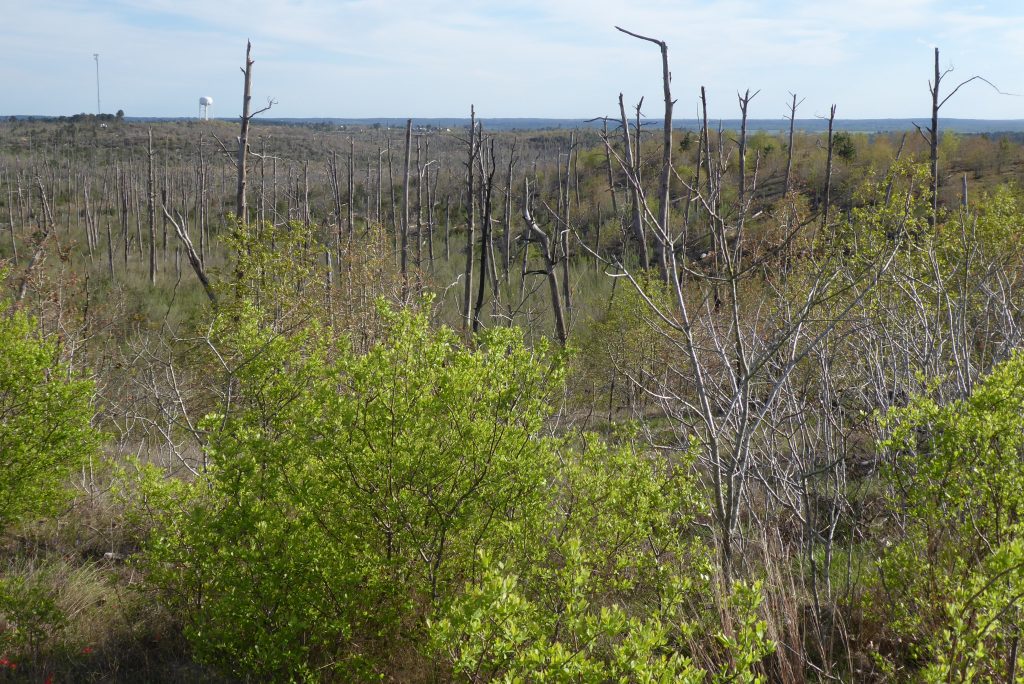
We had hoped to camp in the Bastrop State Park, but all the spaces were taken so we cycled onto a KOA (Kamp of America) site on the outskirts of Bastrop squeezed between the Colorado River and the major highway out of town.
“Why aren’t you going West to East?” asked Daryll, the friendly camp host. “For some reason everyone who comes here from the UK rides west which is where the prevailing winds are from.” Terry and I shot glances at each other. It wasn’t the first time we’d heard this. When we rode the TransAm we decided to go East-West in order to follow the trail European settlers would have taken to the Pacific. We’d not even thought about riding the ST the opposite way.
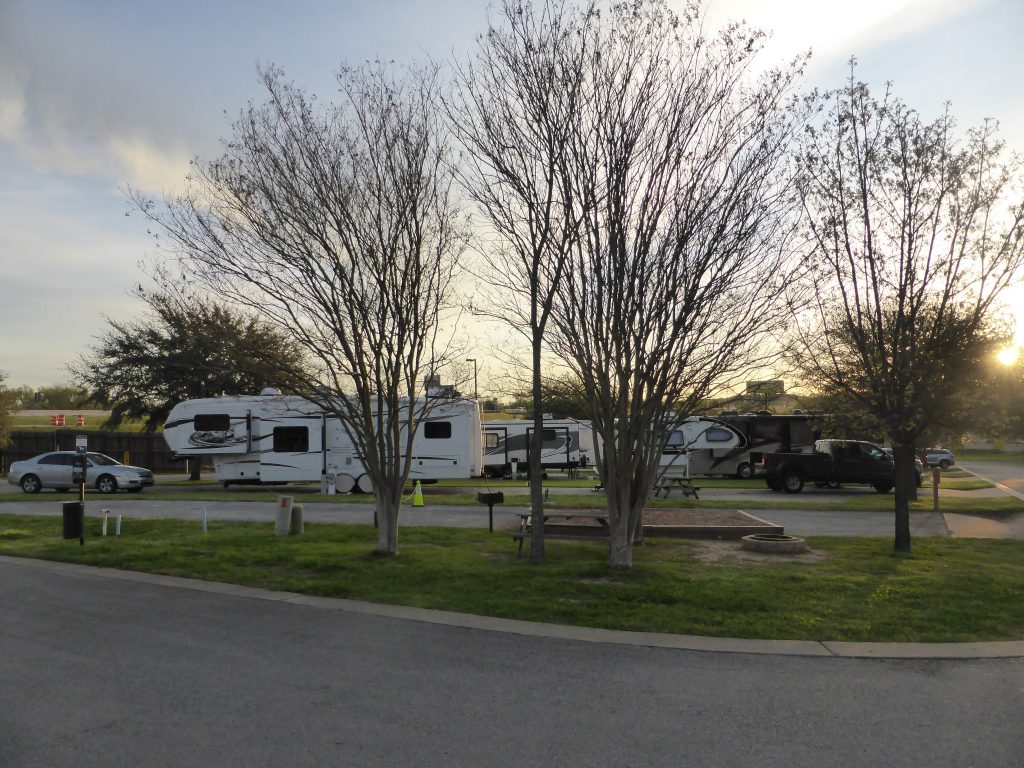
We set up on a small patch of grass just in front of the washrooms, cooked up noodles and peanuts with the added ingredient of spicy trailmix (which really didn’t work) had a shower, caught up on the news at home, which was still being dominated by Brexit and were lulled to sleep by the rumble of passing traffic.

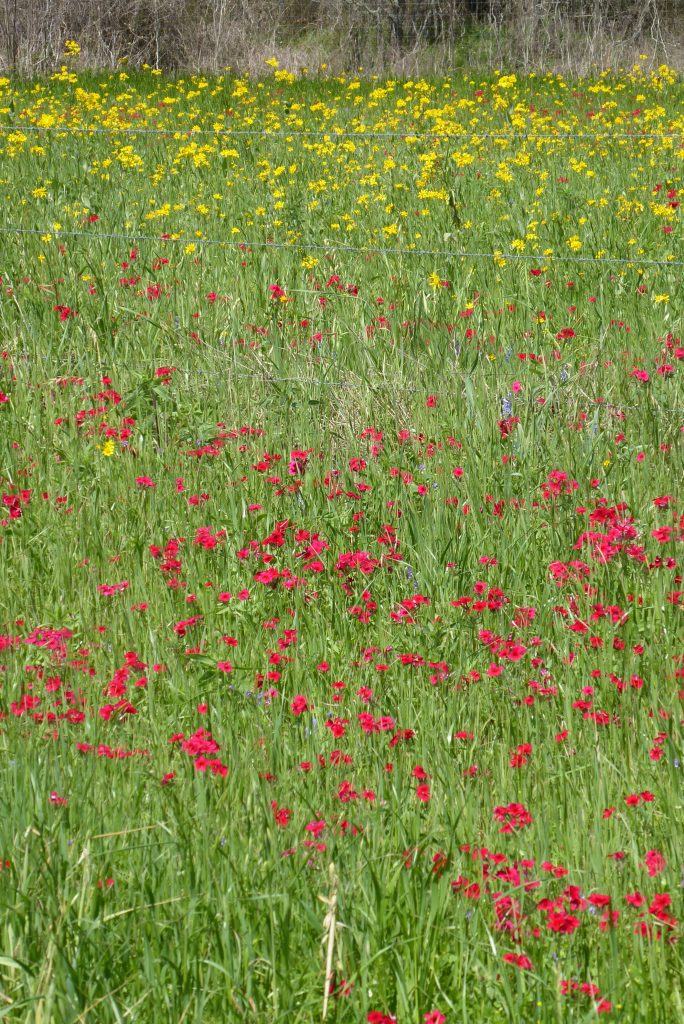

Today’s miles: 44.08
Total miles since Anastasia State Park: 1,307.97



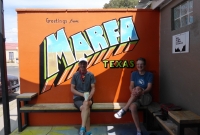
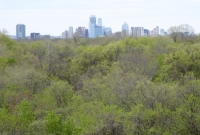
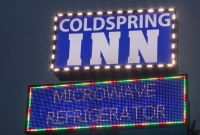
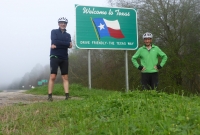
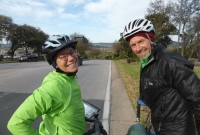
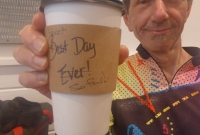

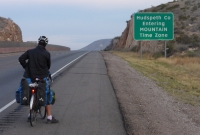
Well, I guess there were a few good things down there… This band was popular in the South Texas La Grange Area:
https://www.youtube.com/watch?v=Vppbdf-qtGU